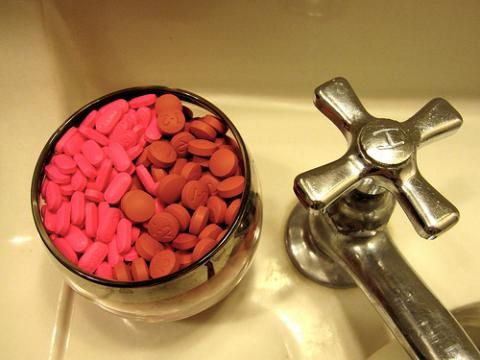
Stymied by conflicting state laws on drug disposal, hospitals and nursing homes in the New York City watershed are stockpiling a growing stash of narcotics that they have no legal way to get rid of.
In January, an investigation by Attorney General Andrew Cuomo's office in the watershed region found that hospitals routinely flushed pharmaceutical waste down sinks and toilets, a practice that risks contaminating the city's unfiltered drinking water supply. In exchange for not being prosecuted, several hospitals in the watershed signed settlements in which they agreed to pay fines and stop flushing drugs.
At the time, Cuomo told the New York Post that the settlements would provide “a new model to implement immediate and sensible precautions to keep waste drugs out of the drinking water supply.”
But thanks to a thicket of conflicting New York State regulations on controlled and hazardous pharmaceuticals, complying with the terms of the settlements so far has proved impossible. Last Friday, representatives from several hospitals and nursing homes held their fourth meeting on the topic at the Catskill Watershed Corporation's headquarters in Margaretville.
The issue, according to health care administrators at the meeting, is that drug disposal – especially of controlled substances like opiates that sell briskly on the black market – falls under the purview of many different local, city, state and federal agencies.
“We have to train our staff to [follow New York State Department of Transportation] standards to take a sharps container from the facility to a bunker in the back of the yard,” said Edward McGrath, an administrator at O'Connor Hospital in Delhi. “We're monitored by forty-plus agencies.”
The hospitals are trapped in a Catch-22. The AG's office has made it clear that hospitals caught flushing drugs inside the New York City watershed will be prosecuted. But regulations of the New York State Department of Health's Bureau of Narcotic Enforcement (BNE) make it prohibitively difficult for hospitals to dispose of controlled substances off-site, and the BNE itself recommends they be destroyed by flushing. Local hospital administrators have repeatedly said that, by flushing, they were fully complying with the law.
“[Cuomo's investigation] was plain out extortion. The guy was running for office. It was political,” said McGrath, whose hospital was among the five facilities that signed settlements. “I think if the AG's office had any compassion, they'd say [the settlements] were null and void.”
At Friday's meeting, the group agreed to a stopgap solution for getting rid of their growing piles of unwanted drugs. The hospitals will set up a “milk run” – a van that would drive to healthcare facilities in the New York City watershed to pick up waste and deliver it to a scheduled hazardous waste disposal event in Delaware County in September. If all goes well, the milk run will be conducted several times a year, in conjunction with household pharmaceutical waste collection events in communities throughout the watershed.
But before the plan can go forward, BNE has to approve it. Neither BNE nor the AG's office sent a representative to the meeting.
Several small healthcare facilities that refused to sign settlements with the AG's office back in January are part of the planning effort. Most, like the larger hospitals, are stockpiling their controlled-substance waste until a solution can be found. Even the very smallest facilities are concerned; CWC director Alan Rosa said that he had begun to get anxious calls from dentists and veterinarians who were unsure how to comply with the law.
Pam Harmon, an administrator at the Robinson Terrace nursing home in Stamford, says she can get by storing drugs on-site until September – but only because the AG's office has already allowed her to do a one-time flush of the drug waste she had been storing.
“Once a year is not enough. Our normal routine is to destroy four times a year,” she said. “I had no more storage space.”
Note: On May 27, the NYC DEP announced the results of a study on pharmaceuticals and personal care products in the city's watershed, and claimed the trace levels of pharmaceuticals it found "pose no public health risks." (The full report can be downloaded here.)
For our ongoing coverage of the issue of pharmaceuticals in New York City's drinking water, click here.
Photo by Flickr user jessamyn. Posted under Creative Commons license.













